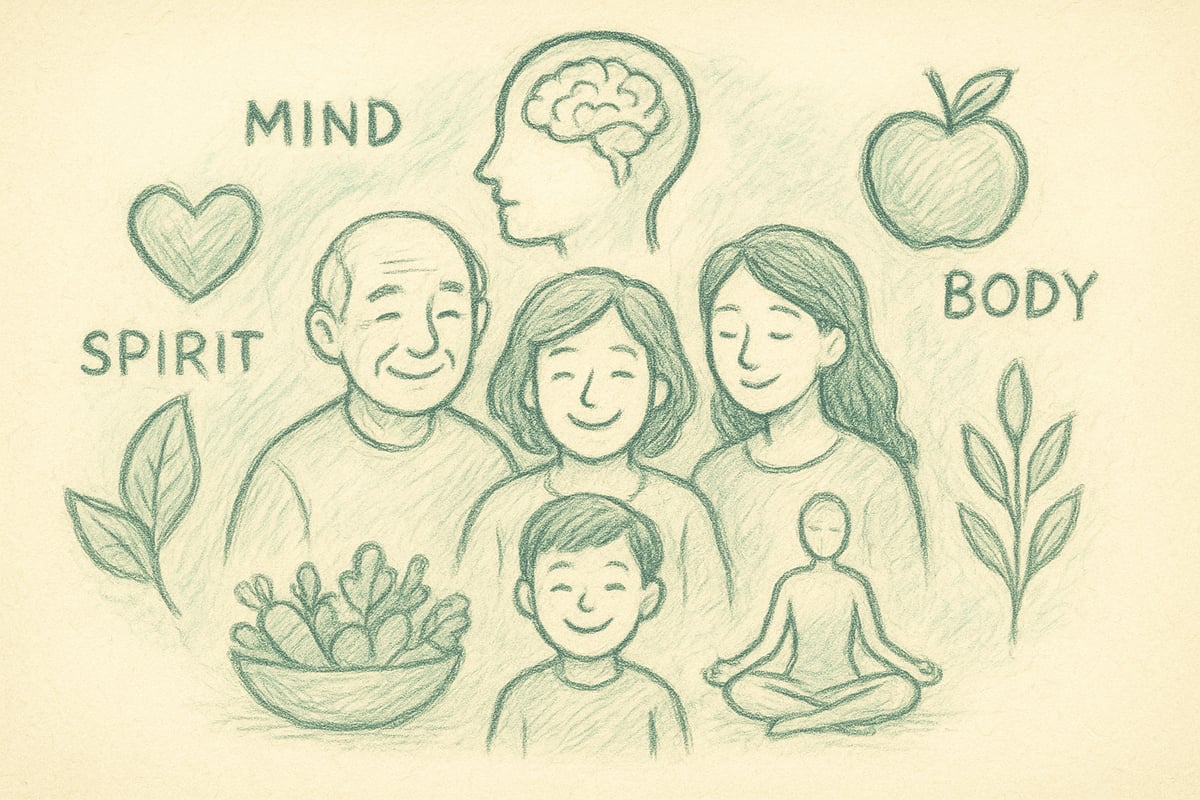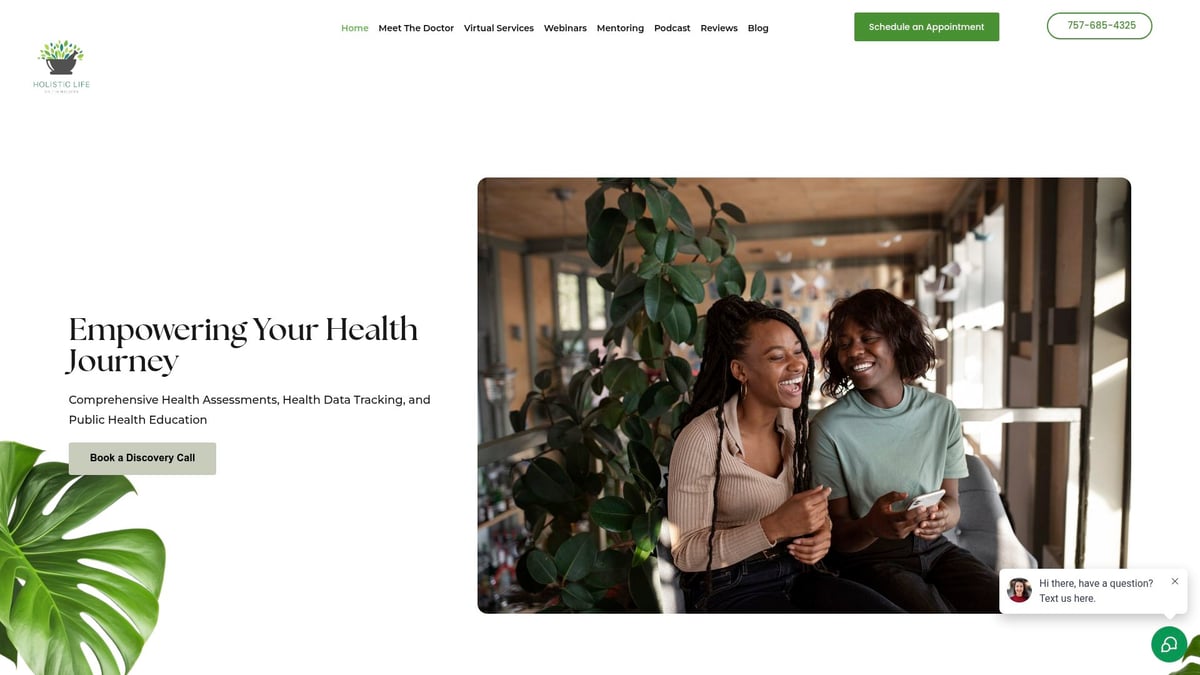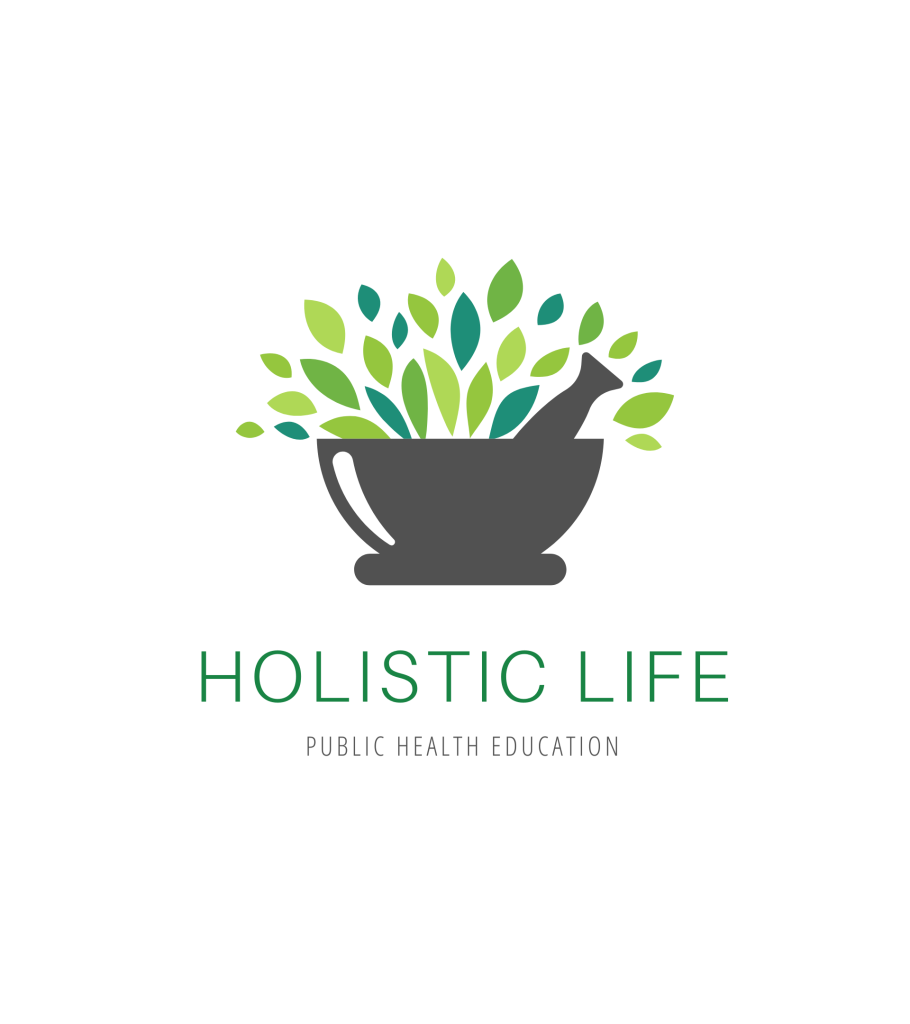Imagine your family’s health being supported by both modern science and time-honored wisdom, creating a nurturing environment for every member. In 2025, holistic family medicine stands as a powerful approach, uniting body, mind, and spirit for true well-being.
This essential guide will help you understand what holistic family medicine offers, giving you practical tools and knowledge for confident healthcare decisions.
Here, you will explore its core principles, evidence-based practices, step-by-step strategies, the latest technology, and how to select the best providers—so your family can flourish in a changing world.
Understanding Holistic Family Medicine: Principles and Philosophy
Imagine a healthcare model that sees your family as more than a collection of symptoms. Holistic family medicine is rooted in the belief that true wellness stems from supporting the body, mind, and spirit as interconnected parts of a whole. This approach integrates physical, emotional, mental, and spiritual health to address the full spectrum of well-being.

Defining Holistic Family Medicine
At its core, holistic family medicine takes a whole-person approach, treating each individual as part of a dynamic family system. Unlike conventional family medicine, which often focuses on diagnosing and treating isolated symptoms, holistic family medicine seeks to understand the root causes of illness. It draws from naturopathic, integrative, and functional medicine traditions, blending evidence-based science with time-honored healing practices.
A key feature of holistic family medicine is prevention. Practitioners emphasize lifestyle medicine, helping families make choices that build resilience and reduce risk before problems arise. Care is tailored for every age, from children to elders, with an emphasis on continuity and deep relationships over time.
The Therapeutic Order guides interventions from least to most invasive. For instance, a child with asthma may first receive support through nutrition, environmental changes, and mind-body therapies, reserving medications as a later step. This method respects the body’s innate ability to heal while still leveraging modern advances when needed.
According to a 2023 NCCIH survey, over 38% of U.S. adults now use some form of complementary or integrative health, highlighting a growing preference for holistic family medicine. Many practices, such as Holistic Family Practice overview, offer a model where clinical care, education, and digital tools blend seamlessly to support families on their journey to wellness.
Core Values and Ethics
Holistic family medicine is guided by a set of core values that shape every patient interaction. Empowerment is central: families are educated about their options and actively involved in decision-making. Practitioners ensure informed consent and foster a collaborative atmosphere, where questions are welcomed and choices are respected.
Respect for cultural, spiritual, and individual diversity is fundamental in holistic family medicine. Providers honor each family’s unique beliefs and traditions, integrating them into care plans when appropriate. This sensitivity helps families feel seen and valued, not just treated.
Ethical practice also means advocating for health equity and working to decolonize healthcare. Holistic family medicine recognizes that access and outcomes are shaped by social, economic, and cultural factors. Practitioners strive to remove barriers and promote fairness across all communities.
For example, some providers incorporate traditional healing methods, such as herbal remedies or spiritual rituals, alongside modern medical treatments. This inclusive approach fosters trust and supports the holistic needs of every family member.
Ultimately, holistic family medicine aims to create an environment where families are supported, informed, and empowered to thrive in every aspect of their lives.
Key Modalities and Evidence-Based Practices in Holistic Family Care
Choosing the right modalities is essential for families seeking holistic family medicine. These approaches blend time-tested traditions with cutting-edge science, addressing the root causes of illness and supporting every aspect of well-being.

Nutrition and Lifestyle Medicine
Nutrition forms the foundation of holistic family medicine, emphasizing personalized plans that prevent disease and boost vitality. Families are encouraged to adopt meal routines rooted in whole foods, mindful eating, and balanced nutrients.
Research highlights the power of lifestyle choices. The Mediterranean diet, for example, can reduce cardiovascular risk by 30 percent, as demonstrated in the PREDIMED study. Regular exercise, restorative sleep, and stress management are also pillars of family health.
To make these changes practical, families can explore healthy foods for holistic health and use planners or apps to track habits. Simple routines like Sunday meal prep or daily walks help embed wellness into busy lives.
Botanical Medicine and Supplementation
Botanical therapies are central to holistic family medicine, offering gentle support for immunity, digestion, and overall resilience. Herbs and supplements are selected for safety, efficacy, and appropriateness for each family member.
For example, probiotics are widely studied for childhood gut health, while echinacea is sometimes used to prevent upper respiratory issues. However, evidence for some botanicals is mixed, and dosing or interactions require careful consideration.
Quality control is vital. Families should seek guidance from trained practitioners, read labels, and ensure products are third-party tested. This careful approach helps maximize benefits and minimize risks in holistic family medicine.
Mind-Body and Spiritual Practices
Mind-body therapies, a hallmark of holistic family medicine, nurture emotional and mental health alongside physical well-being. Practices like meditation, yoga, and breathwork build resilience to stress for both children and adults.
Families may integrate spiritual or faith-based practices into care when appropriate, respecting individual beliefs. Studies show that family mindfulness programs can enhance emotional regulation and reduce anxiety in children.
Simple activities, such as guided meditations before bedtime or family yoga sessions, create shared moments of calm. These strategies empower families to manage stress and support each other through holistic family medicine principles.
Integrative Therapies and Homeopathy
Integrative therapies expand the toolbox of holistic family medicine. Modalities like acupuncture, chiropractic, and massage address pain, mobility, and overall function without relying solely on medication.
Acupuncture, for instance, has demonstrated moderate benefit for pediatric headaches in Cochrane reviews. Homeopathy remains more controversial, yet is still widely used, and safety should always be discussed with a healthcare provider.
Families can explore these options as part of a stepwise approach, often starting with the least invasive therapy. This aligns with the core philosophy of holistic family medicine: supporting the body’s natural healing abilities.
Technology and Remote Monitoring
Technology is transforming holistic family medicine, making integrative care more accessible than ever. Telehealth enables families to consult with practitioners from home, while digital apps track nutrition, symptoms, and progress.
Remote patient monitoring has been shown to improve diabetes outcomes by 20 percent, according to a 2024 JAMA study. Families can use these tools to set goals, monitor health markers, and stay connected with their care team.
The blend of technology with holistic family medicine ensures that whole-person care fits seamlessly into modern family life, supporting health journeys every step of the way.
The Holistic Family Medicine Visit: What to Expect and How to Prepare
Embarking on a holistic family medicine visit is an opportunity to experience healthcare that considers every dimension of your family's well-being. Expect a collaborative, in-depth process that goes far beyond a routine checkup.

Comprehensive Assessment Process
The first step in holistic family medicine is a comprehensive assessment that explores the full picture of each family member’s health. This begins with a detailed intake, covering not just medical history, but also lifestyle, emotional, and social factors. Practitioners use tools like functional lab testing and thorough physical exams to uncover underlying patterns.
A unique aspect of holistic family medicine is family health mapping. This process looks at genetic predispositions, living environments, and shared routines to identify both risk factors and strengths. For example, a practitioner might discover that a child’s asthma is linked to both family dietary habits and environmental triggers at home.
Emotional and mental health are key components of the assessment. Families are encouraged to discuss stress, relationships, and coping strategies. Resources such as emotional health in families provide valuable insight into these important areas.
By the end of this process, families receive a clear, personalized overview of their health, setting the stage for targeted, effective care.
Personalized Care Planning
Once the assessment is complete, holistic family medicine practitioners work with families to develop individualized care plans. This collaborative process involves setting achievable goals for each member, often starting with lifestyle adjustments like nutrition, sleep, and stress management.
Stepwise intervention is a hallmark of holistic family medicine. Practitioners prioritize noninvasive options first, such as dietary changes and exercise routines. If needed, they may recommend supplements or advanced therapies, always tailoring the approach to the family’s needs and preferences.
Education is central to this phase. Families receive resources, handouts, and may attend workshops to deepen their understanding. For instance, a family struggling with sleep issues might receive a plan that includes nutritional guidance, behavioral changes, and relaxation techniques.
The care plan is designed to empower families, making them active participants in their health journey. This partnership ensures that interventions are practical, sustainable, and aligned with family values.
Ongoing Support and Follow-Up
The holistic family medicine journey does not end after the initial visit. Ongoing support is woven into the care model, with regular check-ins to track progress and make needed adjustments. These follow-ups may happen in person, through telehealth, or in group settings where families can learn and grow together.
Practitioners encourage self-management and resilience by teaching families how to monitor health markers, celebrate achievements, and respond to challenges. Group visits or community classes provide added support, fostering a sense of connection and shared learning.
Research shows that patients engaged in holistic family medicine report higher satisfaction and better outcomes. For example, satisfaction rates are 30% higher compared to conventional care, reflecting the value of this comprehensive, patient-centered approach.
Ongoing support helps families maintain momentum, building lasting habits that contribute to lifelong health.
Integrating Holistic Medicine Into Your Family’s Daily Life: Step-by-Step Guide
Adopting holistic family medicine as a lifestyle is a journey, not an overnight change. By following a step-by-step process, families can make sustainable improvements that nurture health in every dimension. This guide provides practical steps to help you integrate holistic family medicine into your daily life, empowering you to create a culture of wellness at home.
Step 1: Assess Your Family’s Needs and Goals
Begin by evaluating the unique health needs and goals of each family member. Holistic family medicine considers physical, mental, and emotional factors, so take time to observe patterns and listen to concerns.
Sit together and discuss:
- What health challenges do you face as individuals and as a family?
- Which strengths and habits already support your well-being?
- Are there specific goals, such as reducing stress, improving sleep, or addressing allergies?
For example, one parent might experience chronic stress, while a child struggles with allergies and a teenager has trouble sleeping. By openly sharing, you create a foundation for personalized holistic family medicine strategies.
Use a simple table or chart to map out priorities and set the stage for your wellness journey.
| Family Member | Health Priority | Strengths | Challenges |
|---|---|---|---|
| Parent 1 | Stress management | Regular walks | Work-related stress |
| Child | Allergy relief | Enjoys veggies | Seasonal symptoms |
| Teen | Better sleep | Active in sports | Screen time habits |
Assessing honestly is the first step in making holistic family medicine relevant and effective for your household.
Step 2: Create a Family Wellness Plan
Once needs are clear, outline a wellness plan that sets achievable, measurable goals. Holistic family medicine relies on proactive, preventative care, so focus on habits that can be tracked and celebrated.
Key actions:
- Set specific goals for nutrition, movement, stress, and sleep.
- Assign roles for accountability, such as a meal planner or mindfulness leader.
- Choose tools to support your plan, like journals, mobile apps, or kitchen charts.
For example, you might commit to preparing three home-cooked meals each week, scheduling evening walks, and establishing a family bedtime routine. Track progress in a shared notebook or digital app to maintain motivation.
A sample wellness plan could look like this:
- Nutrition: Try a new vegetable each week.
- Movement: 20 minutes of activity daily.
- Stress: Practice deep breathing before dinner.
- Sleep: Devices off 30 minutes before bedtime.
These simple steps make holistic family medicine actionable and family-centered.
Step 3: Build a Supportive Home Environment
Your home environment can either reinforce or undermine your holistic family medicine goals. Focus on creating spaces and routines that make healthy choices the easy choices.
Start by:
- Stocking your pantry with whole, minimally processed foods.
- Reducing household toxins by choosing natural cleaning products.
- Organizing spaces for exercise, relaxation, and connection.
Establish regular routines, such as Sunday meal prep or nightly mindfulness sessions. Designate tech-free zones or times to promote rest and family bonding.
For example, set up a small herb garden on the kitchen windowsill or create a cozy meditation corner. These tangible changes help embed holistic family medicine into daily routines and foster long-term health habits.
Step 4: Engage the Whole Family in Education and Activities
Active participation deepens understanding and commitment. Holistic family medicine thrives when everyone is involved in learning and wellness activities.
Consider these approaches:
- Attend health workshops or webinars together.
- Involve children in cooking, gardening, or practicing yoga.
- Use stories, games, or creative projects to teach health concepts.
For example, assign each family member a night to share a favorite healthy recipe or mindfulness technique. Encourage curiosity and celebrate small achievements.
Interactive learning makes holistic family medicine engaging and memorable, helping children and adults alike develop lifelong healthy habits.
Step 5: Leverage Community and Professional Resources
No family is an island. Connect with local or online communities for support, ideas, and accountability. Holistic family medicine is enriched by diverse perspectives and professional guidance.
Join community groups, such as holistic parenting forums or wellness meetups. Seek out certified holistic family practitioners for expert advice and care. Participating in family wellness challenges or group classes can boost motivation.
For deeper understanding of how whole-person care integrates into primary settings, explore resources like Implementing Whole Person Primary Care. These insights can help you make informed decisions and find providers who align with your holistic family medicine values.
Step 6: Monitor Progress and Adjust as Needed
Ongoing reflection is vital for success. Track health markers, moods, and energy levels to see what works and where changes are needed. Holistic family medicine encourages regular check-ins and flexibility.
Use simple tools:
- Family health journals or digital trackers
- Quarterly reviews to celebrate progress and set new goals
- Open conversations to discuss what is or isn't working
Data shows that families using holistic family medicine approaches report fewer sick days and higher satisfaction. By monitoring and adjusting together, you ensure your plan stays relevant and effective, nurturing resilience and well-being for all.
Technology, Tools, and Resources for Holistic Family Medicine in 2025
Staying connected to the latest technology is essential for families embracing holistic family medicine. In 2025, a robust mix of digital platforms, educational resources, and supportive networks empowers families to manage health proactively. Let’s explore the tools making a difference in whole-person care today.
Digital Health Platforms and Apps
Digital platforms are transforming how families access holistic family medicine. Leading apps like MyFitnessPal support nutrition tracking, while Headspace guides mindfulness and stress management. Family-focused platforms offer features for remote monitoring, symptom tracking, and personalized wellness plans.
Telehealth services now enable families to consult with holistic practitioners from home, making care more accessible and efficient. For instance, Virtual holistic care services provide comprehensive online consultations, empowering families to integrate holistic family medicine into their routines with expert guidance. These platforms often include secure messaging, progress tracking, and community forums for ongoing support.
Online Education and Certification Programs
Families seeking to deepen their understanding of holistic family medicine can access a range of online educational resources. Webinars, interactive courses, and certification programs are available for both beginners and advanced learners. Institutions like the International Institute of Integrative and Holistic Health Sciences offer free introductory classes as well as advanced certifications.
These programs teach evidence-based approaches, nutrition, lifestyle medicine, and practical skills families can apply daily. By participating together, families strengthen their knowledge base and make more informed decisions about holistic family medicine, ensuring everyone is involved in the wellness journey.
Community and Support Networks
Community is at the heart of holistic family medicine. Online support groups, forums, and local wellness meetups create spaces where families can share experiences, exchange tips, and find encouragement. Popular options include holistic parenting Facebook groups, regional wellness collectives, and virtual meetups focused on family well-being.
These networks foster connection and offer practical advice for everyday challenges. By engaging with community resources, families gain insight into holistic family medicine trends and discover new ways to support each member’s unique health needs.
Selecting Quality Resources
With the surge of digital tools, it is vital to vet resources carefully. High-quality holistic family medicine information comes from providers with recognized credentials, transparent methodologies, and a commitment to evidence-based care. Always check for professional affiliations, up-to-date content, and clear references to scientific studies.
Avoid resources that make exaggerated claims or lack credible backing. A quick checklist for families:
- Review provider credentials
- Look for evidence and transparency
- Avoid one-size-fits-all solutions
- Cross-check information with trusted sources
By staying vigilant, families can confidently navigate the world of holistic family medicine and make choices that truly support long-term well-being.
Choosing the Right Holistic Family Medicine Provider
Selecting the best provider for holistic family medicine is essential to achieving optimal care for your loved ones. The right practitioner will blend expertise, compassion, and a whole-person perspective, guiding your family toward lasting wellness.
Credentials and Training
When considering a holistic family medicine provider, start by reviewing their credentials. Look for professionals such as naturopathic doctors (NDs), medical doctors (MDs), or doctors of osteopathy (DOs) who have completed additional training in integrative or functional medicine. Board certification and ongoing education signal a commitment to high standards and current best practices.
Naturopathic medicine, for example, emphasizes a whole-person approach and is grounded in principles that align closely with holistic family medicine. For a deeper understanding of this scope and philosophy, see the Scope of Practice and Principles of Care of Naturopathic Medicine in North America.
Specialized training in areas like pediatrics, nutrition, or mental health can further enhance a provider’s ability to tailor care to your family’s unique needs.
Evaluating Practice Philosophy and Approach
Beyond credentials, it is vital to understand a provider’s approach to holistic family medicine. Ask questions about their care philosophy, communication style, and willingness to involve your family in decision-making. A good fit will respect your cultural values and health goals while fostering collaboration.
Holistic family medicine providers often integrate core principles such as continuity of care and comprehensive support. To explore how these values shape effective family medicine, visit Storylines of Family Medicine III: Core Principles—Primary Care, Systems, and Family.
Prioritize practitioners who embrace shared decision-making and adapt care to each family member’s needs.
Patient Experience and Testimonials
Patient experiences offer valuable insight into a provider’s effectiveness and bedside manner. Seek out reviews, testimonials, and word-of-mouth recommendations from others who have used holistic family medicine services.
Research shows that 85 percent of families rely on peer recommendations when choosing their provider, highlighting the importance of community trust. Case studies and real-life stories can give you a clearer picture of what to expect and help set realistic expectations for your family’s care journey.
Practical Considerations
Logistics play a major role in your decision. Confirm whether the provider accepts your insurance, offers telehealth appointments, and maintains accessible office hours. A family-friendly environment, flexible scheduling, and clear communication channels are crucial for ongoing holistic family medicine support.
Accessibility ensures that all family members, from young children to elders, can participate fully in their care and benefit from a coordinated approach.
Holistic Family Practice: A Model for Integrative Family Care
One standout example is Holistic Family Practice, which exemplifies how holistic family medicine can be delivered with excellence. This model combines clinical care, patient education, digital tools, and community support to empower families.

Led by Dr. Erica Steele, this practice offers both virtual and in-person consultations, comprehensive health assessments, and personalized wellness plans. Their services prioritize root-cause healing and family-focused care, providing access to educational webinars, courses, and a supportive online community.
Choosing a provider like this can help your family integrate holistic family medicine into everyday life and achieve sustainable health outcomes.
As you explore ways to nurture your family’s well-being with both evidence-based strategies and time-honored wisdom, it’s natural to want practical tools and expert support at your fingertips. If you’re ready to take the next step and deepen your understanding of holistic family medicine, I invite you to start with a trusted resource designed for curious minds and caring families alike. Build your foundation, gain actionable insights, and empower your loved ones to thrive—begin your journey today and Download Holistic Guide.
